The forgotten past that shaped the comics industry
There are many events shaping the history of our world that go unnoticed when they occur. The significance of a current event may not be seen or appreciated until many years later. A break-in at a Washington DC hotel was not exactly front page news when it happened, but just over two years later it led to the resignation of the President of the United States. In 1908 a stupid song about a girl named Katie Casey was written. It took nearly three decades before the song was sung at a baseball game. Today it is such as staple of the sport, it is difficult to imagine a game without it.
Another aspect of change is once it has been around long enough, we forget there was ever any other way to be. Does anyone REALLY remember what DC was like ‘pre-Crisis’? In 20 years will we be thinking about the New 52 the way we thought about Superman for a long time? Events large and small make up the history of every industry and many are never really appreciated. Here are a few that shaped the comics industry we know today…
The fall of American News Company
This could have just as easily been titled “don’t put all your industries’ eggs in one basket”, and is a cautionary tale for the current comic book industry. American News Company was the dominant distributor of comics and periodicals in the 1940’s and 50’s with an almost total monopoly of the national market. After a series of bad financial moves and a federal anti-trust judgment in the mid 50’s, ANC laid off most of their workforce (reportedly as high as 7500 workers) and closed their doors in 1957.
The short term fallout of the closure was that many publishing companies had to search for new distribution channels. Being forced to pay much higher rates, many of these companies folded as well. Publishers were also forced by distributors to change formats to either digest size or magazine sized publications regardless of previous practice. Such changes obligated publishers to invest money in new equipment for the printing process, further draining resources.

The largest single long term effect was to a company called Atlas. Atlas had to switch to distributor Independent News, a company owned by their largest competitor, National Periodical Publications. NPP restricted Atlas to only 8 comic book titles a month with the theory being that NPP could keep their competitor from growing and prospering. Atlas was preparing to end comics publication completely to focus on the more successful magazine and paperback divisions. For reasons lost in the memories of the very few left alive from that era, the company continued to publish comics and started slowly growing the range of titles. In 1961 Atlas changed its name to Marvel, started putting out new books and saw very quick growth in sales. Marvel was in a position of having a large back inventory of artwork and completed stories they had already paid for due to the restrictions under NPP. In light of this backlog, Marvel began downsizing the artists and writers. Not having to pay for material to print for many months improved their cash flow and the company bottom line began to improve. The new Marvel books began outselling the National titles and when the time came to renegotiate the distribution contract, Marvel was in a position to have the limitations removed. National eventually renamed themselves DC Comics after the title of their flagship book, Detective Comics. But in the shadow of Marvel’s sudden success, DC began to flounder.
If not for the change in the distribution system, Marvel might never have come to exist as a comics publisher. Without Marvel to boost the industry in the 1960’s and 70’s, would there even BE a comics industry today?
Go to the next page for black & white comics…
The black & white boom and bust
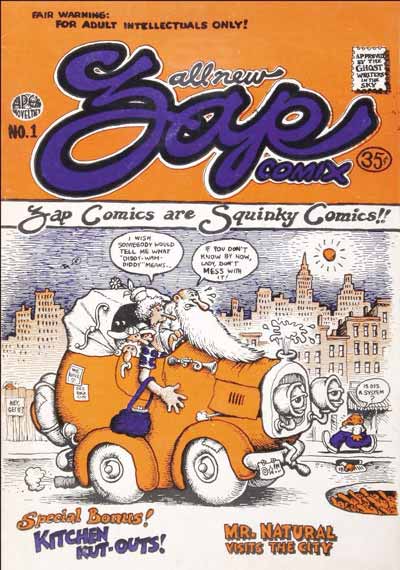
Black & white comics have been around since the beginnings of the medium, but as the Silver Age was starting, B&W books began to evolve into the counterculture books like Zap and Zippy the Pinhead, the independent and alternative comics like witzend and very adult fare like Omaha the Cat Dancer and Cherry Poptart. When these less mainstream books started to become more popular in the 1980’s, more titles with and a wider audience began to appear. Fish Police, Teenage Mutant Ninja Turtles and The Crow made the popularity of the B&W market explode. This upsurge caused the comic shops to order heavily on every new title to capture any potential hits.
When the black and white market imploded, many shops were in financial trouble having over extended themselves on comics they could not sell or return. Just a few short years later the speculator bubble of the 90’s burst causing many of these already cash poor stores to fold. The industries’ complete reliance on the direct market caused a ripple effect to the publishers as well. Now that much of the store system was gone, some publishers folded while others tried to return to the older newsstand model and failed.
Only in the last few years has the market recovered enough to allow more retailers to survive. The surge of comics in the 90’s allowed major chains the opportunity to carry both the monthly books as well as the reprint collections. Stores like Barnes & Noble, Hastings and countless online dealers are now large factors in a market that never utilized them before.
Headlight covers
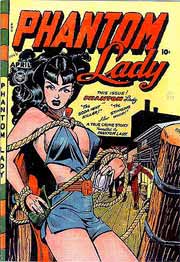 I imagine it has been long enough since this phrase was in regular use that I might need to explain it to all but the most serious collectors. A headlight cover is simply an illustration on the cover of a comic where female breasts are the most eye catching or prominent item. Sometimes it was very subtle, sometimes not even a little bit subtle. While this was not exclusive to comics and pulps, the use of the boobies to draw young eyes to the covers was most blatant in comics and the spicy pulps.
I imagine it has been long enough since this phrase was in regular use that I might need to explain it to all but the most serious collectors. A headlight cover is simply an illustration on the cover of a comic where female breasts are the most eye catching or prominent item. Sometimes it was very subtle, sometimes not even a little bit subtle. While this was not exclusive to comics and pulps, the use of the boobies to draw young eyes to the covers was most blatant in comics and the spicy pulps.
Why would this be a factor in comics today? After the second World War service men stopped reading the comics they had enjoyed while deployed. Something needed to be done to bring them back. Using these covers to remind them of the sexy spicy magazines was one of the many approaches tried. Clicking on the ‘high-beams’ in the mid 1940’s, artists like Alex Schomburg and Matt Baker were encouraged to create sexy covers as a way to increase sales. This strategy worked very well for a while, but once the comics code was enacted things changed. The new self-censoring body forced out most violence and any overtly sexual depictions of women. Amazingly, the sexy drawing never really went away, the artists were just a bit more subtle than before. It took years for the code to fade away and when it did the demand for the old classic books like Phantom Lady increased. New books began to be more overt in depictions once again using some of the classic styles. Sexy images of women were the first to return but excessive violence took much longer.
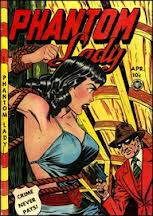 Female characters that had only slightly exaggerated curves in the Silver Age were now spectacularly boobie endowed. Imagine Rouge or Power Girl if the restrictions still existed (for those unfamiliar, think floatation devices). Some say this excess is not a good thing, but ink on paper never hurt anyone. As long as people buy it, it will continue to be published. There are quite a few female artists and writers that have little or no issue with such excess. Just ask Amanda Conner about her version of Power Girl. While mainstream comics are still not overt in the use of sexy women, they are not far from it. While smaller publishers such as Zenescope exist almost entirely due to sexy covers on the books.
Female characters that had only slightly exaggerated curves in the Silver Age were now spectacularly boobie endowed. Imagine Rouge or Power Girl if the restrictions still existed (for those unfamiliar, think floatation devices). Some say this excess is not a good thing, but ink on paper never hurt anyone. As long as people buy it, it will continue to be published. There are quite a few female artists and writers that have little or no issue with such excess. Just ask Amanda Conner about her version of Power Girl. While mainstream comics are still not overt in the use of sexy women, they are not far from it. While smaller publishers such as Zenescope exist almost entirely due to sexy covers on the books.
Swipes
The great Wally Wood was renowned for his art and skill. His style is one of the most admired and copied in comics. There was one thing he was particularly fond of saying about the creation of art, “Never draw anything you can copy, never copy anything you can trace, never trace anything you can cut out and paste up”.
This practice, commonly called swiping, and is the constant companion to any artist on a deadline. The use of swipes throughout the history of the medium has affected the way the work is produced and viewed. While most decry the practice publicly today as cheating, there are very few artist in the field that don’t employ it to some degree.
To be clear, there really is nothing wrong with the practice. It can be a vital means of staying on schedule, solving layout problems or paying homage to a previous work. Many artist essentially swipe from themselves (even just photocopying a panel over and over) as a means of referencing an earlier work or story point while others use it for dramatic or humorous effect.
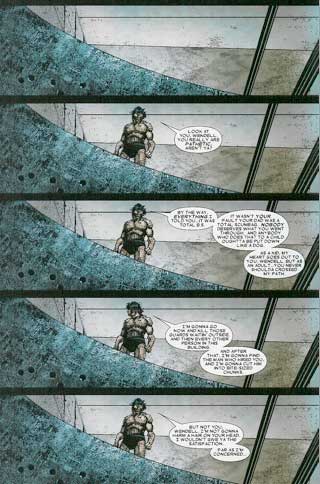
One of the more scandalous episodes of swiping came in the late 80’s when Keith Giffen was called out for swiping from an artist named Jose Munoz in his work on the series Ambush Bug. Giffen’s art style had always been a bit flexible and every few years would take a major turn. This time it went from a clean and traditional style to impressionistic and sparse. The new heavier lined style became very popular and worked well with the more humorous stories Giffen was known for. Giffen was just working from recent memory and using a style he liked. But his work on Ambush Bug tended to be far too close to the original for some people. His reputation suffered and he didn’t draw a book for a couple of years. I remember at the time feeling bad for Giffen. He was and is a very talented creator, and the negative attention for doing something everyone in the industry does was unfair.
Others artist, such as Greg Land, are very open about using tracing and light-boxing methods. His style has made him of the most popular artist out there.

Then there are other artists such as Rob Liefeld. His swipes are all over the map. Below is the first example that I noticed while reading an issue of X-Force, back before I knew better. Having been a Ronin fan, I recognized the Frank Miller “influence” immediately.

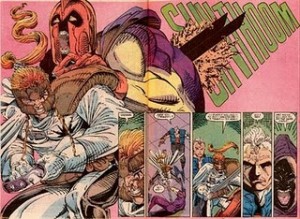
Swipes have become integral to the visual make up of comics. History is full of artists from the great to the less than great doing it. What would the art in our favorite books be like without them?
Original art
Go to a convention, any convention. There are always art dealers selling original art from comics that span the entire history of the medium. Pages go for as little as $100 up to thousands of dollars each. New auction records are set regularly when a page from a classic book goes up for sale. Here, in a huge use of page space, are two recent examples…

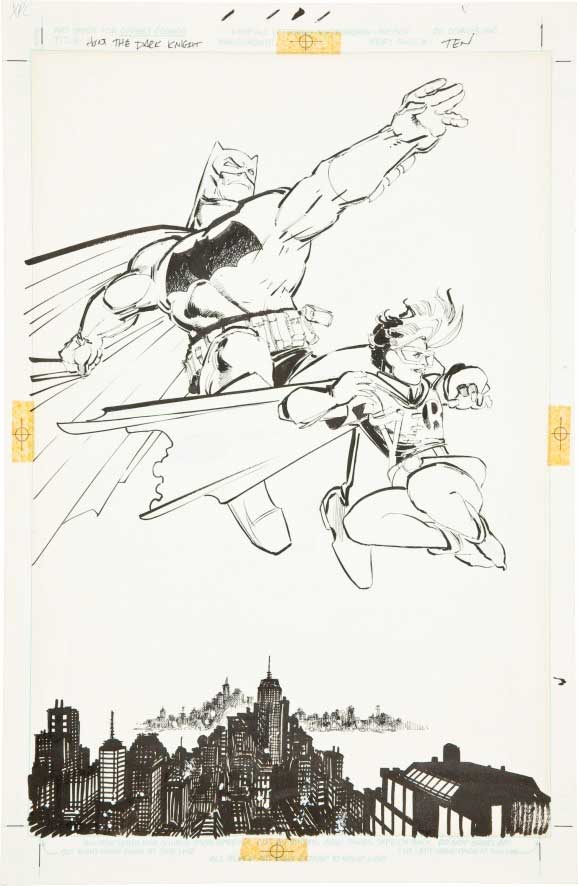
I get chills looking at the DKR page in its original form! Now to give you chills (or make you sick to your stomach), there was a time when original art was routinely destroyed!
Almost every publisher that has ever produced comics is guilty of this offense. Standard practice to destroy, throw out or give away the original art work. At the time it was because no one, not even the artists, cared about the pages or assigned any value to them beyond the page rate they got paid. There are countless horror stories, from well into the Silver Age, of pages being lost or destroyed. Pages from Hal Foster’s Prince Valiant were simply thrown out as trash. Art great Al Williamson was proud of his collection of original art (including dozens of Foster pages) rescued from the garbage. DC comics used to award the writer of the best letter about an issue with that issues original cover art. (Remember when there were letters columns in comics?) At the same time Dc was giving away art, they were shredding pages on a monthly basis to clear out the files. In one instance, DC also ‘lost’ over 1900 pages of art when they moved them from one storage facility to another.
Marvel Comics also had a reputation of losing art. Art would just ‘disappear’ from piles in the offices. What art they did manage to keep track of, would either be kept from the artist or split it between the artist and the writer of the book. One famous story is about artist P.Craig Russell carefully cutting out the word balloons of Roy Thomas’ script from completed pages and sending them to Marvel saying, “Let Roy have his words, I will keep my art!”.
Sadly, far more art from the Golden Age is lost than still exists. Most of it having been destroyed long ago by people that simply didn’t think the art was worth saving.
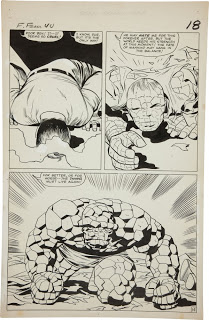
One ‘dirty little’ art story was Marvel’s battle with Jack Kirby. Marvel just flat out refused to return the art to “The King”. Only after threatening to make Kirby sign away some rights he never legally had, Marvel returned a few hundred of the thousands of pages he drew for the company.
Original artwork became an entire segment of the collectors market and a huge source of income for artists. If not for people like Neal Adams fighting for the rights of the artists, fans might never have been able to experience these beautiful artworks in their original forms.
The coming of Len Wein
There is a great quote from Mark Evanier about his earliest experiences with the comic book industry:
The second ‘comic book person’ I ever met was Jerry Siegel, the third was Bob Kane and the fourth was Jack Kirby–so right there, you have the history of comics in a microcosm: the man who created Superman, the man who created Batman, and the man who created everything else.
There is someone else who deserves mention in the same manner, Len Wein. Without Wein both Marvel and DC comics would be drastically different today. I tend not to like “what ifs…?” because they are based on a faulty premise; “What if something that happened, didn’t happen? What would happen then?” I much prefer to look at what did happen and see the web of events forming out of that one occurrence. Len Wein had his hand in the creation of a great deal of characters and concepts that are still around today. His contributions form many of the foundations of what we now see in the industry.
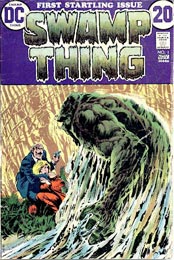 One example is Swamp Thing, a creation of Len Wein and Bernie Wrightson. “So what?”, you may ask. Without this book much of the New 52 as well as an entire segment of DC myth would simply not exist. It is also possible that The Sandman series by Neil Gaiman would be significantly altered or non-existent. Gaiman himself has said that the first time he “fell in love with a writer, it was Len Wein [on Swamp Thing]”. Without that influence, Gaiman may never have ever written for DC or written comics at all?
One example is Swamp Thing, a creation of Len Wein and Bernie Wrightson. “So what?”, you may ask. Without this book much of the New 52 as well as an entire segment of DC myth would simply not exist. It is also possible that The Sandman series by Neil Gaiman would be significantly altered or non-existent. Gaiman himself has said that the first time he “fell in love with a writer, it was Len Wein [on Swamp Thing]”. Without that influence, Gaiman may never have ever written for DC or written comics at all?
Then there is Wein’s choice of Alan Moore to take over writing the book. Without that choice, it is very possible that Moore would never have made the leap into mainstream American comics at DC. Moore would have likely still done Miracleman, From Hell and The League of Extraordinary Gentlemen but who can say for sure. Certainly there would be no Watchmen as written by Moore and edited by Wein.
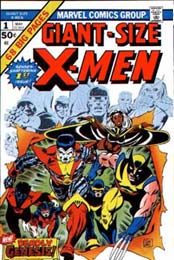 Wein also helped revive the most important ‘dead’ book at Marvel comic. The X-Men was a Lee/Kirby creation and one of the few that was an almost total failure. The title limped along for years before being cancelled. Then Roy Thomas and Neal Adams revived the series in the early 70’s. They had a great run on the book but it failed to sell. After a run of random reprints, Marvel nearly killed the book entirely. Then came Len Wein and Dave Cockrum! Together they created the foundations of the current Marvel mutant family. They built on a foundation already started. But to be fair, it was a foundation that was crumbled. Their creation of over half of the ‘New’ X-Men was the key to the future of Marvel and almost all of the companies’ 1980’s prosperity. Wolverine, Nightcrawler, Thunderbird, Colossus and Storm were new creations and on their backs, the entire mutant saga was built. When Chris Claremont took it he made it his own. But it is important to remember the real start of today’s X-books was with Wein and Cockrum.
Wein also helped revive the most important ‘dead’ book at Marvel comic. The X-Men was a Lee/Kirby creation and one of the few that was an almost total failure. The title limped along for years before being cancelled. Then Roy Thomas and Neal Adams revived the series in the early 70’s. They had a great run on the book but it failed to sell. After a run of random reprints, Marvel nearly killed the book entirely. Then came Len Wein and Dave Cockrum! Together they created the foundations of the current Marvel mutant family. They built on a foundation already started. But to be fair, it was a foundation that was crumbled. Their creation of over half of the ‘New’ X-Men was the key to the future of Marvel and almost all of the companies’ 1980’s prosperity. Wolverine, Nightcrawler, Thunderbird, Colossus and Storm were new creations and on their backs, the entire mutant saga was built. When Chris Claremont took it he made it his own. But it is important to remember the real start of today’s X-books was with Wein and Cockrum.
You may not agree with me or like what I have to say, but I think small events are what make up the world we see today. Looking back at history it is easy to find these small events and unrecognized people. This article has just been the tip of the comics iceberg, so go search out some of your own.
What do you think? Leave a comment.



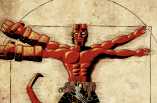



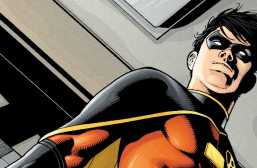

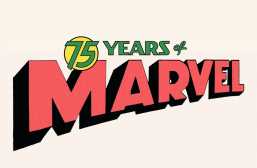
Genuinely found this outstanding! I could categorize myself as a new generation comic book reader and it is very interesting to explore the past. Very informative: THUMBS UP!
It is crazy how that Miller page went for half a million. It must be a collector that grabbed it at that price. Thanks for the article!
And the value will continue to rise as time goes by 😉 This was a very good read…
Thanks for sharing your knowledge. Ended up tracking down a few pages on Wikipedia to continue exploring the history of the industry.
Interesting summation, particularly in the earlier history of comic books…